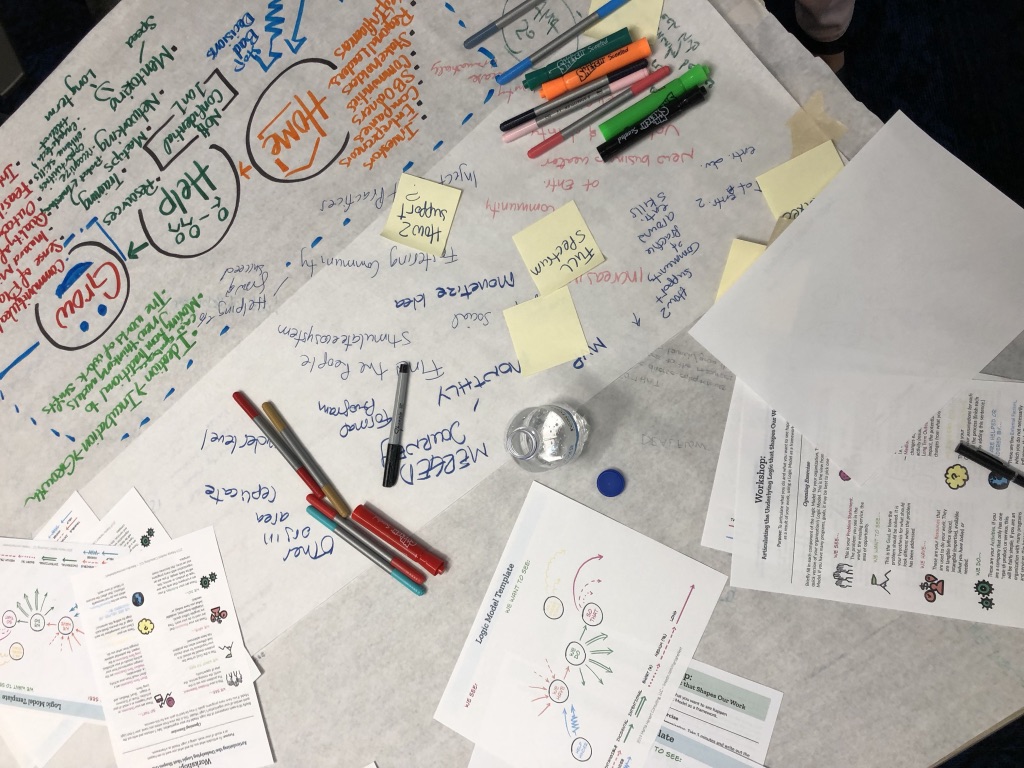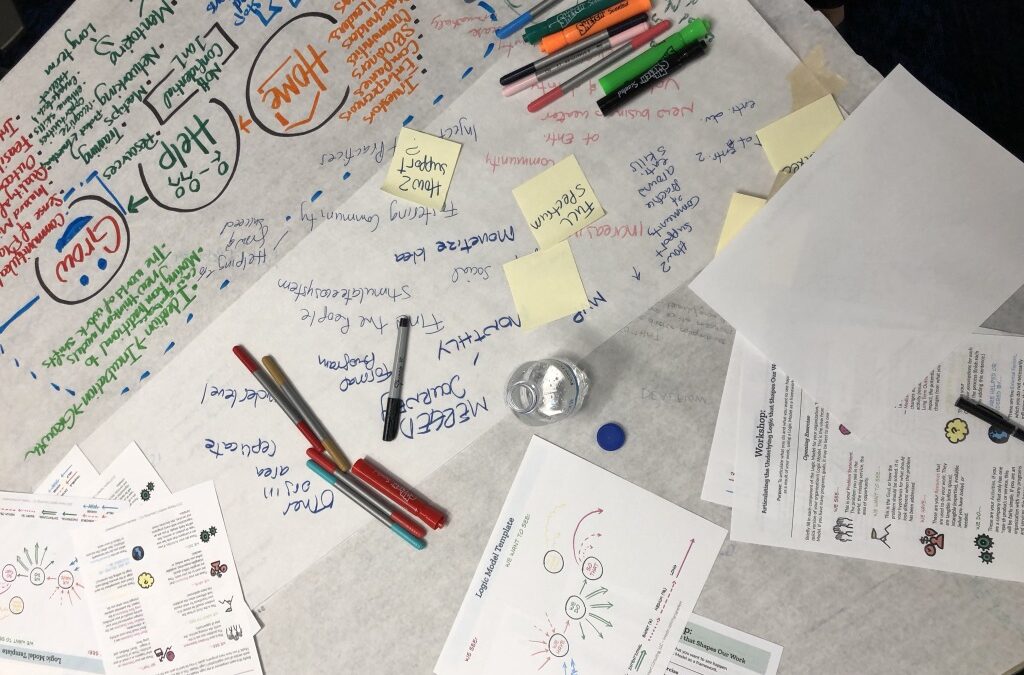Graphic facilitation is a multifaceted medium designed to elevate engagement and entertainment at any event. Hiring a graphic facilitator is a surefire way to encourage your audience to look up from their devices and pay attention. It’s also a proven method of boosting retention.
The prevalence of graphic facilitation is growing, and with that growth comes various names for the practice. Performance infodoodling, drawnversations, knowledge walls, Idea Boarding, or sketchnoting – each with a varying degree of intensity.
Some like to use graphic facilitation to add depth and potentially a lasting record to a meaningful, info-rich live event. Others prefer utilizing graphic facilitation as an innovative, effective way to foster a productive collaborative environment.
A key differentiator between graphic facilitation and graphic recording, or livescribing an event, is that the graphic facilitator is often trained to shape and direct the conversation or event with their imagery, all while capturing the key ideas visually.
And sometimes a live artist just amplifies the creativity in a room by harnessing the power of neuroscience.
Research shows that the cooperation of multiple brain networks results in optimal creative performance.
- The Executive Attention Network, which governs laser focus;
- The Imagination Network, responsible for helping us envision multiple ideas and perspectives; and
- The Salience Network, which tracks our inner thoughts along with outer stimuli in order to sort what’s most important.
Graphic facilitation, when done well, can corral all three of those networks in concert with motivating an audience to better understand the content. Then the audience is better able to process their reaction to your content.
Wondering where graphic facilitation can be effective? The short answer: everywhere. For the long answer, here are a few excellent examples of folks getting creative with graphic facilitation.
At Conferences, Meetings, and Keynotes
A gathering in Italy of academics, practitioners, and food professionals had a singular goal- to come away with a manifesto about computing and food. Dr. Makayla Lewis brilliantly illustrated the resulting manifesto. This is a fantastic takeaway for attendees. It is also a compact and attractive way to communicate their work to others well after the event concluded.
Marketo used a graphic facilitator to capture the keynotes at their annual summit. The company was rewarded with succinct visuals summarizing their main topics, like Sales Cycle Optimization with Content, SEO & Social Media, in a single, shareable page.
During Sporting Events
Ever tried running a marathon? Ever tried drawing a marathon? How about both at once? That’s exactly what illustrator, New York Times columnist, and amazingly good multitasker Christoph Niemann did during the 2011 New York City Marathon – plus, he live-Tweeted his experience! He finished forty drawings, and a whole marathon, in just over 6 hours.
During Political Events
BBC News commissioned a graffiti artist to capture UK’s 2017 General Election in pictures – and hundreds of thousands of viewers were captivated by his painting on Facebook Live. This took the phrase “think big picture” quite literally.
Rounding out the interactive experience, journalists posted corresponding written news stories in the Facebook Live comments so that viewers could easily toggle between the visual and the written media.
The New Yorker deployed an artist to draw the 2016 Democratic National Convention in real time. They have also turned to talented cartoonists to sketch political debates in real time- as has the Boston Globe, primarily relying upon editorial cartoonist Dan Wasserman. By simultaneously broadcasting his work on Facebook Live, Wasserman and the Boston Globe facilitated a national conversation.
Finally, individual artists have leveraged the instantaneous nature of social media platforms and smartphones to give viewers a window into happenings like the People’s Climate Change March- some, like Toronto artist Sarah Lazarovic, even march and draw at the same time!
Accompanying a Podcast
Sprawlcast Calgary included graphic facilitation in a pop-up journalism event. Talk about multimedia – this live event was recorded and then promoted as a podcast, alongside both a full transcript and the stellar visuals created in realtime by tremendously talented comic artist Sam Hester. The result is an experience that speaks to anyone, anywhere, no matter how they like to learn.
In the Classroom

One teacher conducted an in-depth exploration of useful applications for graphic facilitation in her classroom- for herself and her students. She took a more “micro” approach to graphic facilitation. She included ways for students and teachers alike to organize their thoughts, understand complex topics, and overcome language barriers and gaps in understanding.
Where You Least Expect It
The 2019 Grammys proved a perfect platform for accomplished live cartoonist Liza Donnelly. Experiencing the Grammys from her perspective gives viewers a new view into the event. In this case, she focused on the power of female performers. Similarly, artist Jonathan Glass (along with his ubiquitous sketchpad) is a standby in New York City’s jazz scene, somehow putting the intangible energy of jazz onto paper.

